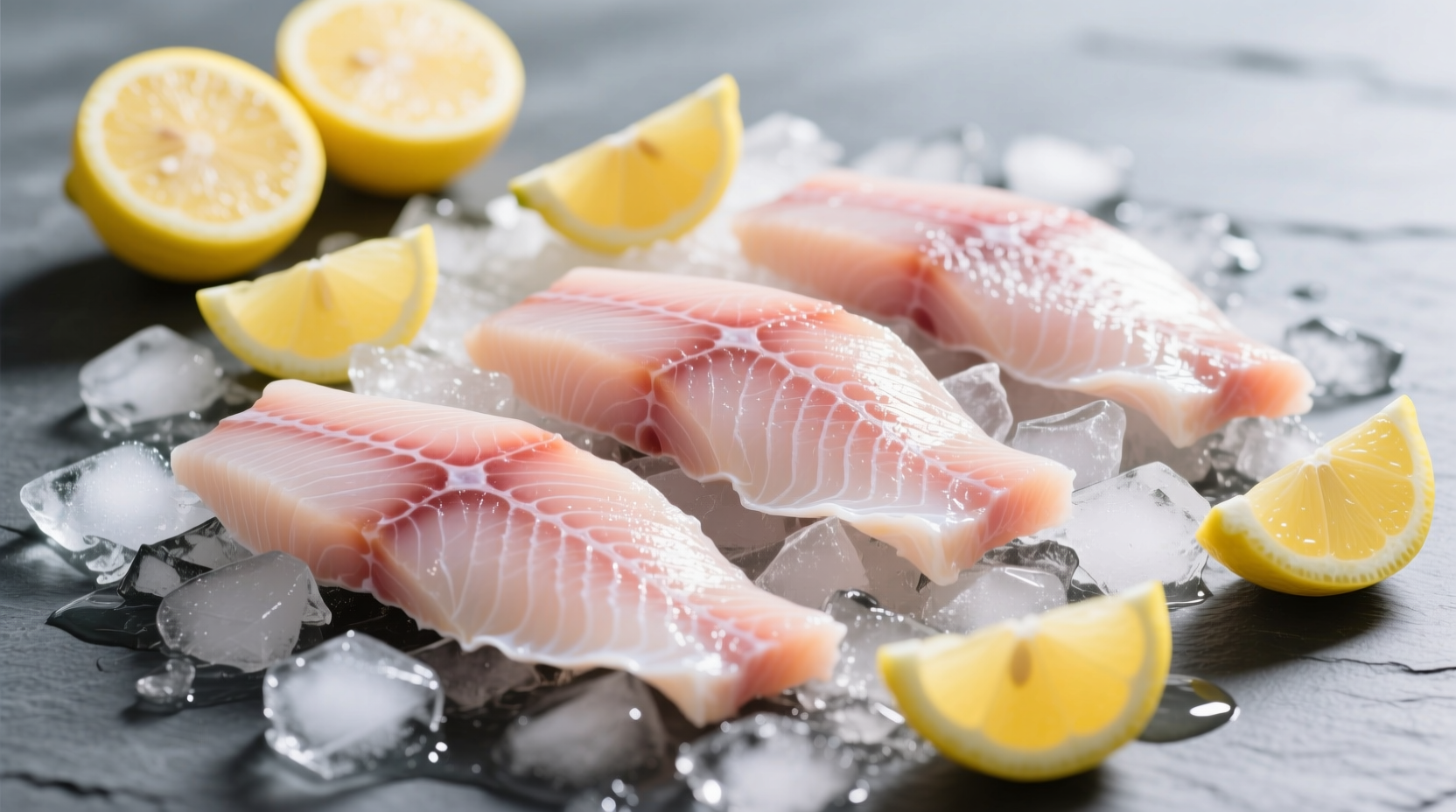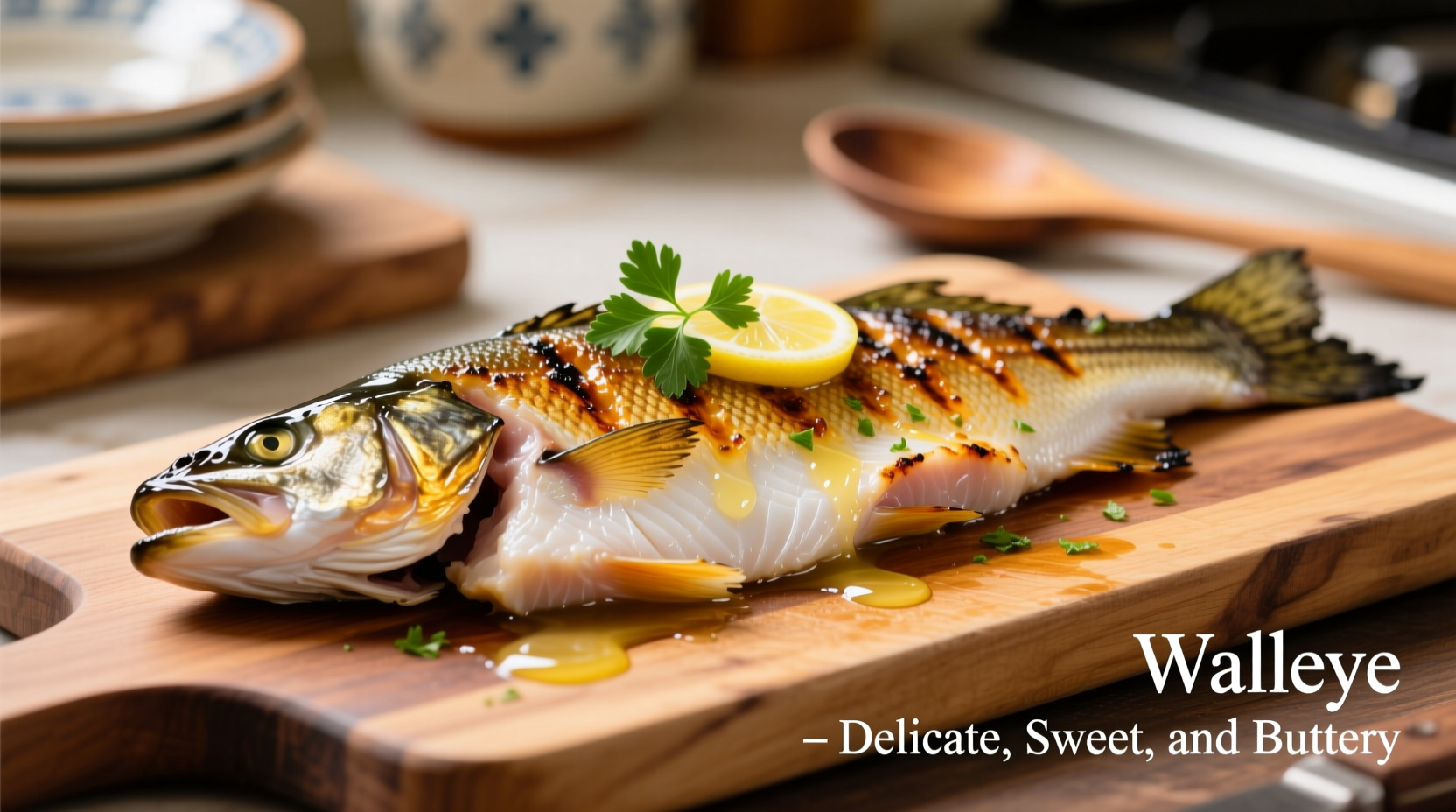Why Walleye Stands Out Among Freshwater Fish
When you're wondering what does walleye taste like, the answer lies in its unique position between mild and flavorful. Unlike more assertive freshwater fish such as catfish or carp, walleye offers a refined eating experience that has made it a prized catch across North America. This popular game fish delivers a clean, sweet flavor profile with just enough character to satisfy without overwhelming your palate.
Walleye Flavor Profile Breakdown
Understanding what fresh walleye tastes like requires examining its specific characteristics:
- Sweetness level: Noticeable natural sweetness, similar to bass but more pronounced
- Texture: Firm yet tender flakes that hold together well during cooking
- Aftertaste: Clean finish without the muddy notes sometimes found in other freshwater species
- Fat content: Moderate oiliness that enhances moisture without greasiness
The flavor of walleye changes subtly based on its diet and habitat. Fish from clear, cold lakes tend to have the cleanest taste, while those from warmer, murkier waters may develop slightly stronger flavors. This variation explains why many anglers and chefs consider northern lake walleye the premium choice for dining.
| Fish Type | Flavor Intensity | Texture | Best Cooking Methods |
|---|---|---|---|
| Walleye | Mild to moderate | Firm, flaky | Pan-searing, baking, grilling |
| Salmon | Strong | Buttery, rich | Grilling, baking, smoking |
| Bass | Mild | Firm | Pan-frying, baking |
| Pike | Moderate | Soft, delicate | Poaching, baking |
| Catfish | Strong | Firm | Deep-frying, blackening |
Seasonal Flavor Variations in Walleye
Walleye's taste profile changes throughout the year based on biological factors. According to fisheries research from the National Oceanic and Atmospheric Administration, walleye develops its peak flavor shortly after spawning season concludes in late spring. During summer months, their diet of freshwater minnows and crayfish contributes to the fish's characteristic sweetness.
Fall walleye often boasts the cleanest flavor as water temperatures cool and the fish prepare for winter. Winter-caught walleye from ice fishing operations maintains excellent quality but may have slightly less pronounced flavor due to reduced feeding activity. Understanding these walleye flavor seasonal changes helps anglers and consumers select the optimal time for harvesting and consumption.

How Cooking Methods Transform Walleye's Flavor
The preparation technique significantly impacts how walleye tastes when cooked. This versatile fish responds well to multiple cooking approaches:
Pan-Seared Walleye
Creates a delicate crust that seals in moisture while enhancing the natural sweetness. Chefs recommend using minimal seasoning to appreciate walleye's inherent flavor. The University of Minnesota Extension notes that pan-searing at 375°F preserves the fish's delicate texture without drying.
Grilled Walleye
Adds subtle smokiness that complements rather than overwhelms walleye's mild flavor. Using cedar planks prevents sticking while imparting additional aromatic notes. This method works particularly well for walleye fillets taste when you want to maintain the fish's integrity while adding dimension.
Baked Walleye
Preserves maximum moisture and allows flavors to penetrate gradually. Baking at 350°F with lemon and herbs creates a restaurant-quality dish that showcases why walleye remains a Midwest favorite. This technique produces the most authentic representation of what does walleye fish taste like in its purest form.
Selecting the Freshest Walleye
When evaluating how to tell if walleye is fresh, look for these indicators:
- Clear, bulging eyes rather than cloudy or sunken ones
- Bright red gills without brown discoloration
- Firm flesh that springs back when pressed
- Clean, ocean-like smell rather than strong fishy odor
- Shiny skin with intact scales
Freshness dramatically affects walleye's flavor profile. The USDA FoodData Central confirms that walleye begins losing its delicate sweetness within 24 hours of being caught if not properly stored. For optimal taste, consume within 1-2 days of harvest or choose flash-frozen options that preserve peak freshness.
Nutritional Benefits That Complement the Flavor
Beyond its appealing taste, walleye offers impressive nutritional value. A 3-ounce serving provides approximately 20 grams of high-quality protein with just 120 calories. It's rich in omega-3 fatty acids (0.5 grams per serving), vitamin D, and selenium. This nutrient profile explains why walleye remains popular among health-conscious consumers seeking mild tasting fish options high in protein.
Perfect Pairings for Walleye's Flavor Profile
To enhance rather than mask walleye's delicate taste, consider these pairing strategies:
- Acidic elements: Lemon, lime, or vinegar-based sauces cut through richness
- Herbs: Dill, parsley, and chives complement without overpowering
- Chefs' secret: A touch of brown butter enhances walleye's natural nuttiness
- Wine pairings: Crisp white wines like Sauvignon Blanc or Pinot Grigio
When exploring what does walleye taste like with different seasonings, remember that less is often more. Overpowering spices can mask walleye's subtle sweetness, while thoughtful enhancements create a memorable dining experience.
Common Misconceptions About Walleye Flavor
Several myths persist about walleye's taste profile. Contrary to popular belief, walleye doesn't inherently taste "muddy"—this off-flavor only occurs when fish are caught from polluted waters. Proper bleeding and cleaning immediately after catching prevents any undesirable flavors. Another misconception suggests walleye tastes identical to pike; however, walleye has a distinctly sweeter profile with firmer texture, making walleye vs pike taste comparison quite noticeable to discerning palates.
Regional Preparation Traditions
Different regions have developed signature ways to prepare walleye that highlight its unique flavor. In the Upper Midwest, traditional preparations focus on simplicity—pan-frying with minimal seasoning to showcase the fish's natural sweetness. Canadian preparations often incorporate maple elements that complement walleye's nutty notes. Understanding these regional approaches helps answer why does walleye taste different in various locations, with preparation methods playing as significant a role as the fish itself.











 浙公网安备
33010002000092号
浙公网安备
33010002000092号 浙B2-20120091-4
浙B2-20120091-4